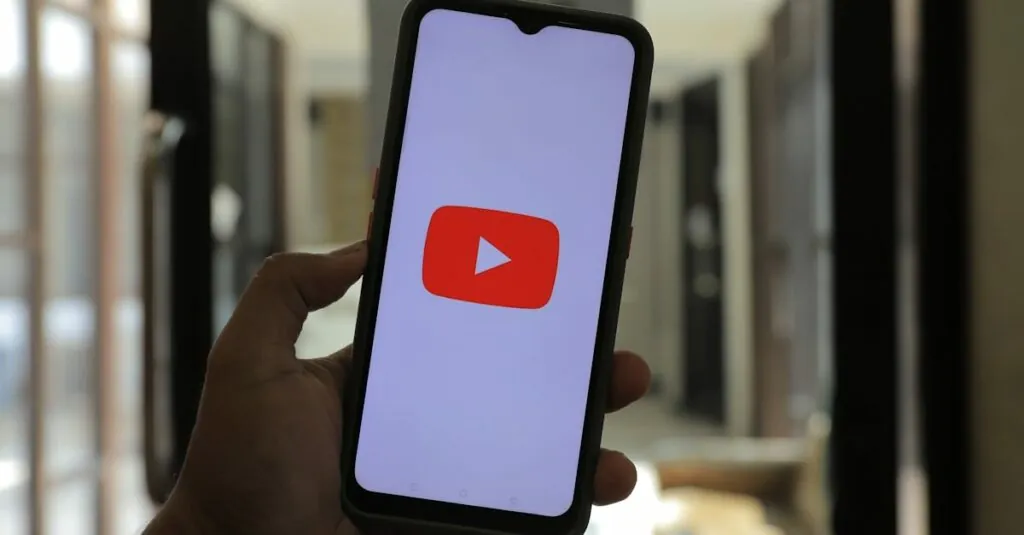Table of Contents
ToggleThe accessibility icon on an iPhone can feel like an unwanted guest at a party—it’s there, but nobody invited it. While it’s designed to help, sometimes it just gets in the way of your daily scrolling and swiping. If you’re tired of that little button stealing the spotlight, you’re not alone.
Understanding The Accessibility Icon
The accessibility icon on an iPhone provides quick access to features that enhance usability for individuals with disabilities. Some users, however, find it distracting during everyday tasks.
Importance Of Accessibility Features
Accessibility features play a crucial role in ensuring that everyone can use technology. They enable users with various disabilities to engage with devices more comfortably. Features like VoiceOver and Magnifier improve the overall user experience for those who require additional support. Enhancements ensure inclusivity in digital spaces, ultimately allowing more people to benefit from the device’s capabilities.
Common Accessibility Icons On iPhone
Several common accessibility icons reside on iPhones, each representing specific features. The “VoiceOver” icon allows users to have text read aloud, making navigation easier. Another icon, “Zoom,” permits users to magnify content on the screen for better visibility. Users may also encounter the “Hearing” icon, designed to assist those with hearing impairments. Each of these icons enhances usability while catering to diverse user needs.
Methods To Remove The Accessibility Icon
The accessibility icon can be removed using a few straightforward methods. Below are two effective approaches to help users regain a clutter-free interface.
Removing From The Settings Menu
Access the Settings app directly to remove the accessibility icon. Navigate to the Accessibility section found towards the top of the menu. Look for “Touch” within Accessibility settings. Next, tap on “AssistiveTouch.” Toggle off the AssistiveTouch option to disable the icon immediately. Users notice the icon disappears from the screen, allowing for more unobstructed viewing. Once toggled off, this method provides a simple solution for those who prefer not to use this feature actively.
Using The AssistiveTouch Shortcut
Utilizing the AssistiveTouch shortcut also serves as a quick way to remove the icon. Initially, access “Settings.” Select “Accessibility” from the options available. Choose “Touch,” then tap “AssistiveTouch.” Find the option labeled “Show Menu.” Within this, users can uncheck the accessibility icon or even customize the menu. Adjusting this menu provides flexibility in how icons appear on the home screen. With these adjustments, users maintain control over screen elements, enhancing their overall experience.
Alternatives To Accessibility Features
Accessibility features on iPhones cater to various user needs, but alternatives exist for those who prefer a different approach. Users can customize accessibility settings to enhance their experience without distractions from unwanted icons.
Customizing Accessibility Settings
Adjusting accessibility settings allows users to tailor their experience. They can choose specific features essential to them while disabling others. For instance, VoiceOver and Zoom settings can be fine-tuned based on individual preferences. Users can explore the Accessibility menu in the Settings app to find options that suit their needs better. Engaging with these settings can streamline interaction and reduce clutter on the screen.
Exploring Other Accessibility Options
Exploring additional accessibility options equips users with tools that may align more closely with their requirements. Various applications exist designed to assist those with disabilities. For example, third-party apps offer tailored voice recognition or screen reading features, enhancing the iPhone’s inherent capabilities. Users can discover these alternatives in the App Store, ensuring they find solutions that fit their lifestyle. Leveraging these options further improves the usability of their device, fostering an inclusive experience.
Removing the accessibility icon on an iPhone can significantly enhance the user experience for those who find it distracting. With just a few simple steps users can regain a cleaner interface tailored to their preferences. This flexibility allows individuals to customize their devices according to their needs while still having access to essential features when required.
For those who still want to maintain accessibility options without the icon cluttering their screen various third-party applications offer additional support. By exploring these alternatives users can create a more personalized and efficient interaction with their devices. Embracing the right tools ensures that technology remains accessible and enjoyable for everyone.




